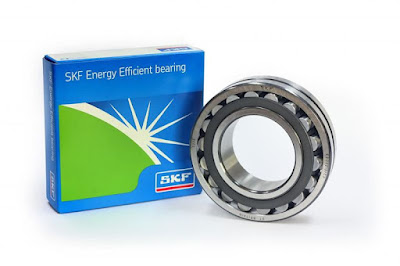How many bearings are there on a hydraulic excavator?
When it comes to heavy construction equipment, hydraulic excavators play a crucial role on job sites around the world. These powerful machines are capable of moving massive amounts of earth and debris, making them essential for many construction, mining, and infrastructure projects. However, as with any complex piece of machinery, there are many parts and components that make up a hydraulic excavator. One critical component is the bearings, which are responsible for ensuring smooth operation and reducing friction between moving parts. But how many bearings are there on a hydraulic excavator, and what roles do they play? This is a question that many people in the construction industry may not have considered before, but it's an important one. Understanding the number and function of bearings on a hydraulic excavator can help operators and technicians keep these machines running smoothly and avoid costly downtime. In this blog post, we'll explore the various bearings that are found on hydraulic excavators and discuss their roles in the machine's overall function
1. Hydraulic excavators consist of various components including bearings.
Hydraulic excavators are complex machinery that require careful consideration of each individual component for proper functionality. One of the crucial components of excavators is bearings. These are the structural elements that enable the smooth movement of the machine's parts, protecting the machine against excessive wear and tear. In general, the number of bearings on a hydraulic excavator may vary depending on the size and complexity of the machine. Hydraulic excavators may have anywhere from a few to dozens of bearings installed in different locations, including track rollers, idlers, turntables, and booms, among other parts. Additionally, the type, size, and quality of bearings installed on an excavator can also vary depending on the specific application and manufacturer's specifications. Due to their critical role in the performance of hydraulic excavators, it is important to ensure regular inspection and maintenance of bearings to avoid costly breakdowns and downtime.
2. The number of bearings on a hydraulic excavator depends on the size and model.
When it comes to hydraulic excavators, the number of bearings present can vary depending on the size and model of the specific machine. Generally speaking, the number of bearings on a hydraulic excavator will range from a few to several dozen. The bearings in an excavator are crucial for ensuring smooth rotational movement of a variety of components, such as gears and drive shafts, within the machine. Therefore, it is imperative to determine the appropriate number and placement of bearings in each specific model to ensure optimal performance and longevity of the excavator. When purchasing or working with a hydraulic excavator, it is important to be familiar with the model and size, as this will determine the quantity and placement of bearings within the machine.
3. Most excavators have between 10-20 bearings, while larger models can have up to 50 bearings.
Hydraulic excavators are versatile machines capable of making quick work of heavy-duty excavation tasks. They can be seen on construction sites all around the world where they help dig foundations, demolish buildings, load trucks, and much more. All hydraulic excavators use bearings to withstand the heavy loads and extreme operating conditions they encounter on a daily basis. These bearings are designed to reduce friction and wear between parts, ensuring the equipment operates smoothly and efficiently. Most hydraulic excavators have between 10-20 bearings, while larger models can have up to 50 bearings. The number of bearings on an excavator ultimately depends on the size and complexity of the machine as well as the type of application it is used for. The bearings on a hydraulic excavator are essential components that play a vital role in ensuring the equipment runs smoothly, and regular maintenance is necessary to avoid damage and costly repairs.
4. Bearings are crucial components that help reduce friction and ensure smooth operation of the excavator.
Bearings are essential components that play a crucial role in the performance and reliability of hydraulic excavators. These machines rely on a variety of bearings to facilitate smooth movement and reduce friction within the equipment's different components. Generally speaking, excavators may have dozens or even hundreds of bearings, depending on their size, complexity, and specific features. These bearings are used to support the weight of the rotating components, such as shafts and gears, and to help maintain proper alignment between moving parts. With their critical importance, it is essential to ensure that bearings are maintained in good condition and replaced when necessary to ensure optimal operation of the excavator.
5. Regular maintenance and inspection of bearings are necessary to prevent premature wear and damage to the machine.
Regular maintenance and inspection of bearings are integral parts of the maintenance program for any hydraulic excavator. The bearings are the key components of the machine and perform various critical functions. Maintenance helps identify and address issues such as improper lubrication, wear and tear, loose connections, and contamination that may lead to premature wear and damage. Neglecting bearing maintenance can result in machine breakdowns, unplanned downtime, and costly repairs. While it may vary based on the specific excavator model, there can be several bearings on these machines, including track roller bearings, carrier roller bearings, idler bearings, and slew bearings, to name a few. Therefore, it is essential to conduct regular inspections and timely maintenance for all bearings to keep the machine performing optimally and extend its lifespan.
In conclusion, knowing the number of bearings on a hydraulic excavator can be useful for maintenance and repair purposes. While there is no definitive answer to how many bearings there are, it can vary depending on the make and model of the excavator. However, as a general rule, most excavators have between 20 to 30 bearings that are responsible for ensuring smooth operation of the machine's various components. Keeping these bearings well lubricated and in good condition is crucial to extending the lifespan and maintaining the performance of the excavator.




Megjegyzések
Megjegyzés küldése